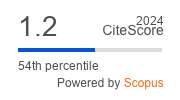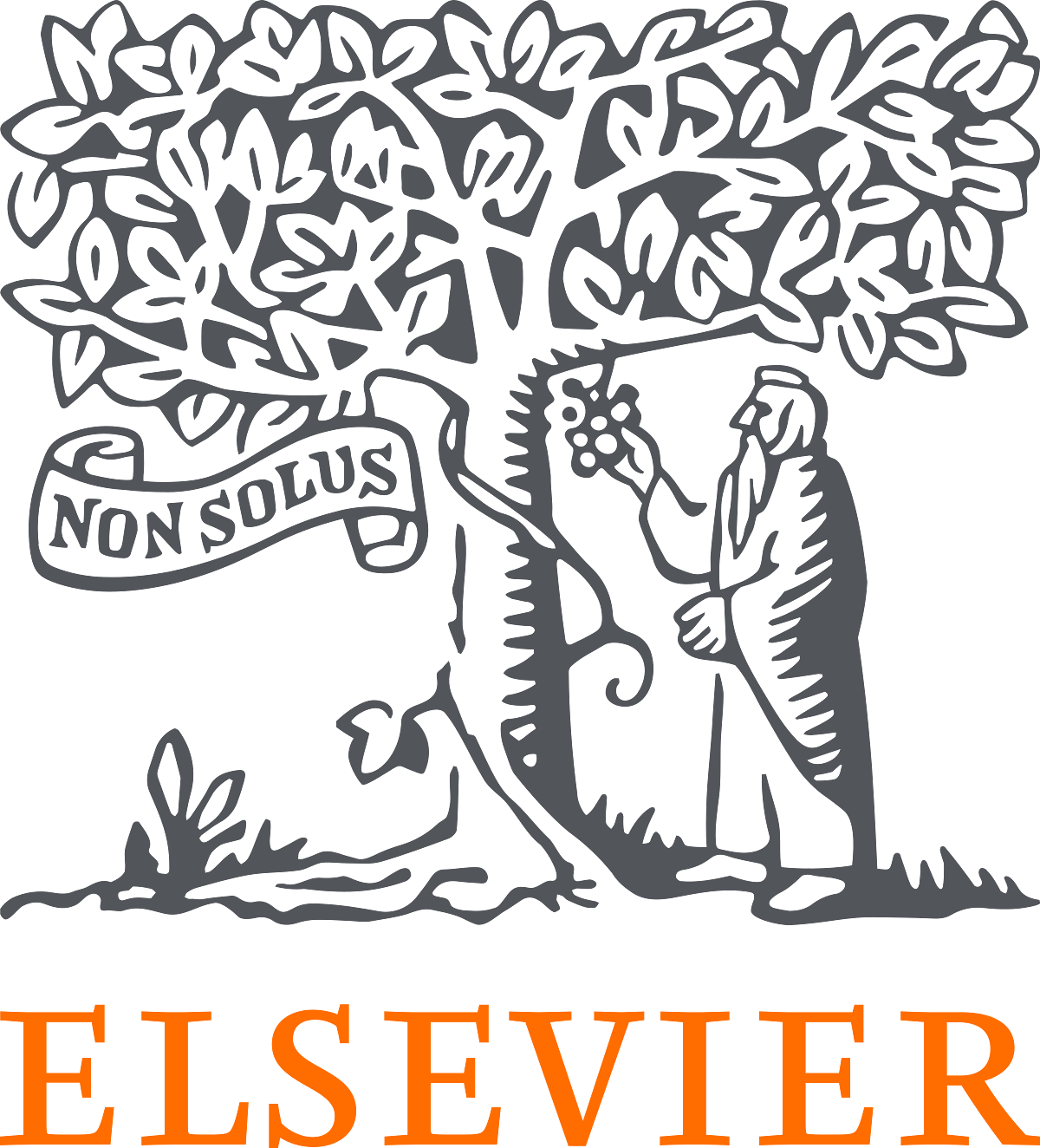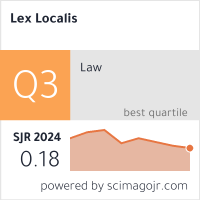Varnost in turizem v evropskih mestih – več študij primerov
DOI:
https://doi.org/10.4335/15.3.359-385(2017)Ključne besede:
varnost v mestih, turizem, civilna zaščita, razvoj varnosti, načrtovanje varnostiPovzetek
Namen prispevka je predstaviti trenutno stanje na področju varnosti in turizma v izbranih evropskih mestih. Cilj raziskave je predstaviti več pristopov, ki so jih sprejela mesta za zaščito turistov. Raziskava je osnovana na več študijah primerov. Opisanih je sedem mest (Alba, Barcelona, Brasov, München, Rim, Saint-Denis in Bruselj) z vidika njihovih varnostnih politik in varnosti. Predstavljeni so tudi rezultati analize primerov. Iz analize primerov izhajajo štiri teme: varnost, politika turizma in prebivalstvo; podoba, komunikacija in javni prostori; upravljanje varnosti na velikih prireditvah; upravljanje nočnega življenja v mestu. Iz rezultatov izhaja, da se mesta ukvarjajo z varnostnimi vprašanji na področju turizma z uporabo različnih politik, upravljanja, metod in praks.
Literatura
Alleyne, D. & Boxill, I. (2003) The impact of crime on tourist arrivals in Jamaica, International Journal of Tourism Research, 5(1), pp. 381–391, https://doi.org/10.1002/jtr.444.
Bailer-Jones, D. M. (2003) When scientific models represent, International Studies in the Philosophy of Science, 17(1), pp. 59–74.
Bassey, M. (1999) Case study research in educational settings (Columbus: McGraw-Hill Education)
Brayshaw, D. (1995) Negative publicity about tourism destinations: a Florida case study, Travel and Tourism Analyst, 5, pp. 62-71.
Brender, N. & Markov, I. (2013) Risk perception and risk management in cloud computing: Results from a case study of Swiss companies, International journal of information management, 33(5), pp. 726-733, https://doi.org/10.1016/j.ijinfomgt.2013.05.004.
Burgess, R. G. (2012) The Research Process in educational settings: Ten case studies (Routledge: London & New York).
Carey, S. C., Mitchell, N. J. & Lowe, W. (2013) States, the security sector, and the monopoly of violence: A new database on pro-government militias, Journal of Peace Research, 50(2), pp. 249-258, https://doi.org/10.1177/0022343312464881.
Charmaz, K. (2011) Grounded theory methods in social justice research, In: Denzin, N. K. & Lincoln, Y. S. (eds.)The Sage handbook of qualitative research 4 (Thousand Oaks: Sage Publications), pp.59-380.
Chesney-Lind, M. & Lind, I. Y. (1986) Visitors as victims: crimes against tourists in Hawaii, Annals of Tourism Research, 13(2), pp. 167-191, https://doi.org/10.1016/0160-7383(86)90036-8.
Corbin, J. M. & Strauss, A. (1990) Grounded theory research: Procedures, canons, and evaluative criteria, Qualitative sociology 13(1), pp. 3-21, https://doi.org/10.1007/BF00988593.
Davis, D., Allen, J. & Cosenza, R. M. (1988) Segmenting local residents by their attitudes, interests and opinions toward tourism, Journal of Travel Research, 27(2), pp. 2-8, https://doi.org/10.1177/004728758802700201.
Deng, J., King, B. & Bauer, T. (2002) Evaluating natural attractions for tourism, Annals of Tourism Research, 29(2), pp. 422–438, https://doi.org/10.1016/S0160-7383(01)00068-8.
Denzin, N.K. & Lincoln, Y.S. (1994) Handbook of qualitative research (Thousand Oaks: Sage Publications).
Denzin, N. K. & Lincoln, Y.S. (2005) The SAGE Handbook of Qualitative Research. 3rd ed. (Thousand Oaks: Sage Publications).
Denzin, N. K. & Lincoln, Y. S. (2013) The landscape of qualitative research: Theories and issues (Thousand Oaks: Sage Publications).
Easterby-Smith. M., Thorpe, R. & Lowe, A. (2007) Raziskovanje v managementu (Koper: Fakulteta za management).
Epitropaki, O., Sy, T., Martin, R., Tram-Quon, S. & Topakas, A. (2013) Implicit leadership and followership theories “in the wild”: Taking stock of information-processing approaches to leadership and followership in organizational settings, The Leadership Quarterly, 24(6), pp. 858-881, https://doi.org/10.1016/j.leaqua.2013.10.005
European Commission (2014) Flash Eurobarometer 392 “Preferences of Europeans towards tourism (Brussels: European Commission), available at: http://ec.europa.eu/public_opinion/flash/fl_392_en.pdf (April 12, 2015).
Eurostat (2015) Tourism statistics 2015, available at: http://ec.europa.eu/eurostat/statistics-explained/index.php/Tourism_statistics (December 13, 2015).
Gubrium, J. F. (2012) The SAGE handbook of interview research: The complexity of the craft (Thousand Oaks: Sage Publications).
Goeldner, C. R. & Ritchie, J. B. (2009) Tourism: Principles, practices, and philosophies (New Jersey: Wiley).
Hall, M., Timothy, D. J. & Duval, D. T. (2009) Security and Tourism: Towards a New Understanding, In: Hall, C. M., Timothy, D. J. & Duval, D. T. (eds.) Safety and Security in Tourism - Relationships, Management and Marketing (New York: The Haworth Hospitality Press), pp. 1-18.
Hughes, J. A. (1990) The philosophy of social research (New York: Longman Publishing).
Komppula, R. (2014) The role of individual entrepreneurs in the development of competitiveness for a rural tourism destination–A case study, Tourism Management, 40(1), pp. 361-371, https://doi.org/10.1016/j.tourman.2013.07.007.
Mansfeld, Y. & Pizam, A. (2006) Tourism, security and safety: from theory to practice (Burlington, MA: Butterworth-Heinemann).
Mawby, R.I. (2014) Responding to Tourist Victims of Crime: Lessons the UK can learn, Crime Prevention and Community Safety: an international journal, 16(4), pp. 294-300, https://doi.org/10.1057/cpcs.2014.12
Mawby, R. I. (2012) Public disorder, antisocial behaviour and alcohol-related crime: from the metropolis to the tourist resort, In: Jones, C., Barclay, E. & Mawby, R. I. (eds.) The Problem of Pleasure: Leisure, Tourism and Crime (London: Routledge), pp. 93–107.
Mawby, R.I. (2007) Crime, place and explaining rural hotspots, International Journal of Rural Crime, 1(1), pp. 21-43, https://doi.org/10.1162/003465399558030.
Mawby, R.l., Brunt, P. & Hambly, Z. (1999) Victimisation on holiday: a British survey, International Review of Victimology, 6(3), pp. 201-211, https://doi.org/10.1177/026975809900600303.
Mekinc, J. & Cvikl, H. (2014) Systematic approach to analysing the crisis in tourism, In: Čaleta, D., Vršec, M. & Ivanc, B. (eds.). Corporate security: open dilemmas in the modern information society (Ljubljana: Institute for Corporative Security Studies), pp. 89-101.
Mekinc, J., Cvikl, H. & Dobovšek, B. (2011) Criminality in Slovenian tourism, In: Meško, G., Sotlar, A. & Winterdyk, J. (eds.) Policing in Central and Eastern Europe - social control of unconventional deviance : conference proceedings (Ljubljana: Faculty of Criminal Justice and Security), pp. 107-124.
Michalko, G. (2004) Tourism eclipsed by crime: the vulnerability of foreign tourists in Hungary, Journal of Travel and Tourism Marketing, 15(2-3), pp. 159-172, https://doi.org/10.1300/J073v15n02_09.
Morrison, M. C. (1998) Modelling nature: between physics and the physical world, Philosophia Naturalis, 35(1), pp. 65–85.
Pizam, A. & Mansfeld, Y. (1996) Tourism, crime and international security issues (Chichester: Wiley).
Recasens A. & Marličre E. (2007) Violence between young people in nighttime leisure zones: A comparative European study (Brussels: VUB Press).
Richardson, L., Denzin, N.K. & Lincoln, Y.S. (2000) Writing: A method of inquiry. In Denzin, N.K. & Lincoln, Y.S. (eds.) The Handbook of Qualitative Research 2nd ed. (Thousand Oaks: Sage Publications), pp. 923-948.
Ross, G.F. (1992) Resident perceptions of the impact of tourism on an Australian city, Journal of Travel Research, 30(3), pp.13-17. https://doi.org/10.1177/004728759203000302.
Schwandt, T.A.(2000) Three epistemological stances for qualitative inquiry, In: Denzin, N. K. & Lincoln, Y.S. (eds.) The Handbook of Qualitative Research 2nd ed. (Thousand Oaks: Sage Publications), pp. 189-213.
Stacey, D., Pomey, M. P., O’Connor, A. M. & Graham, I. D. (2006) Adoption and sustainability of decision support for patients facing health decisions: an implementation case study in nursing, Implementation Science, 1(17), 1-10, d https://doi.org/10.1186/1748-5908-1-17.
Stake, R. E. (2005) Qualitative case studies. In: Denzin, N. K. & Lincoln, Y. S. (eds.) The SAGE Handbook of Qualitative Research (Thousand Oaks: Sage Publications), pp. 443-466.
Stake, R. E. (2013) Multiple case study analysis (New York: Guilford Press).
Strauss, A. & Corbin, J. (1998) Basics of qualitative research (Thousand Oaks: Sage Publications).
Tajeddini, K. & Mueller, S. L. (2012) Corporate entrepreneurship in Switzerland: evidence from a case study of Swiss watch manufacturers, International Entrepreneurship and Management Journal, 8(3), pp. 355-372, https://doi.org/10.1007/s11365-011-0179-y.
Yin, R. K. (2013) Case study research: Design and methods (Thousand Oaks, CA: Sage Publications).
Yin, R. K. (2011) Applications of case study research (Newbury Park, CA: Sage Publications).
Weaver, D. & Oppermann, M. (2000) Tourism management (Singapore: John Wiley & Sons Australia, Ltd).
Wei, Y. (2013) Crime field analysis and the control of tourism crime, Tourism Tribune, 28 (10), pp. 107-113, https://doi.org/10.3969/j.issn.1002-5006.2013.010.013
Wertz, F.J., Charmaz, K., McMullen, L.M., Josselson R., Anderson, R. & McSpadden, E. (2011) Five Ways of Doing Qualitative Analysis: Phenomenological Psychology, Grounded Theory, Discourse Analysis, Narrative Research, and Intuitive Inquiry (New York: Guilford Press)
World Economic Forum (2015) The Travel & Tourism Competitiveness Report 2015, available at: http://www3.weforum.org/docs/TT15/WEF_Global_Travel&
Tourism_Report_2015.pdf (April 15, 2016)
World Tourism Organisation (1996). Tourist Safety and Security: Practical Measures for Destinations (Madrid: UNWTO).








